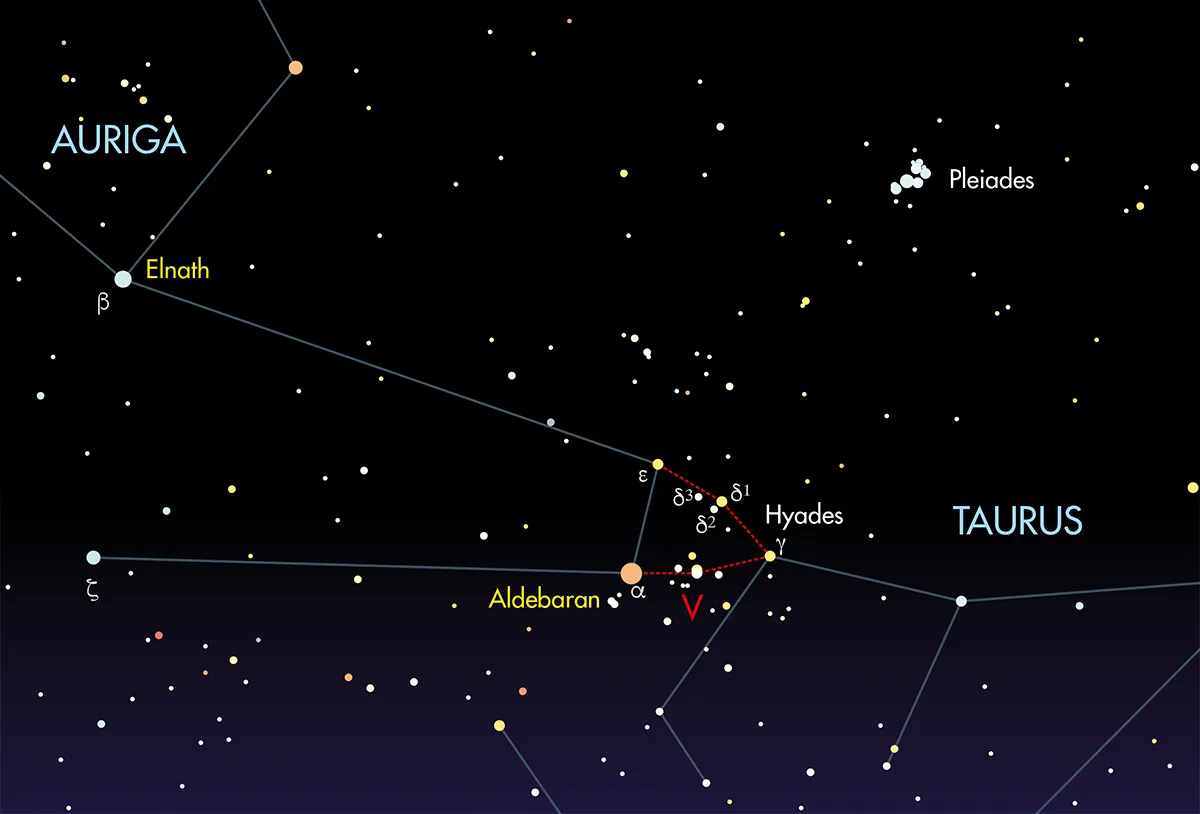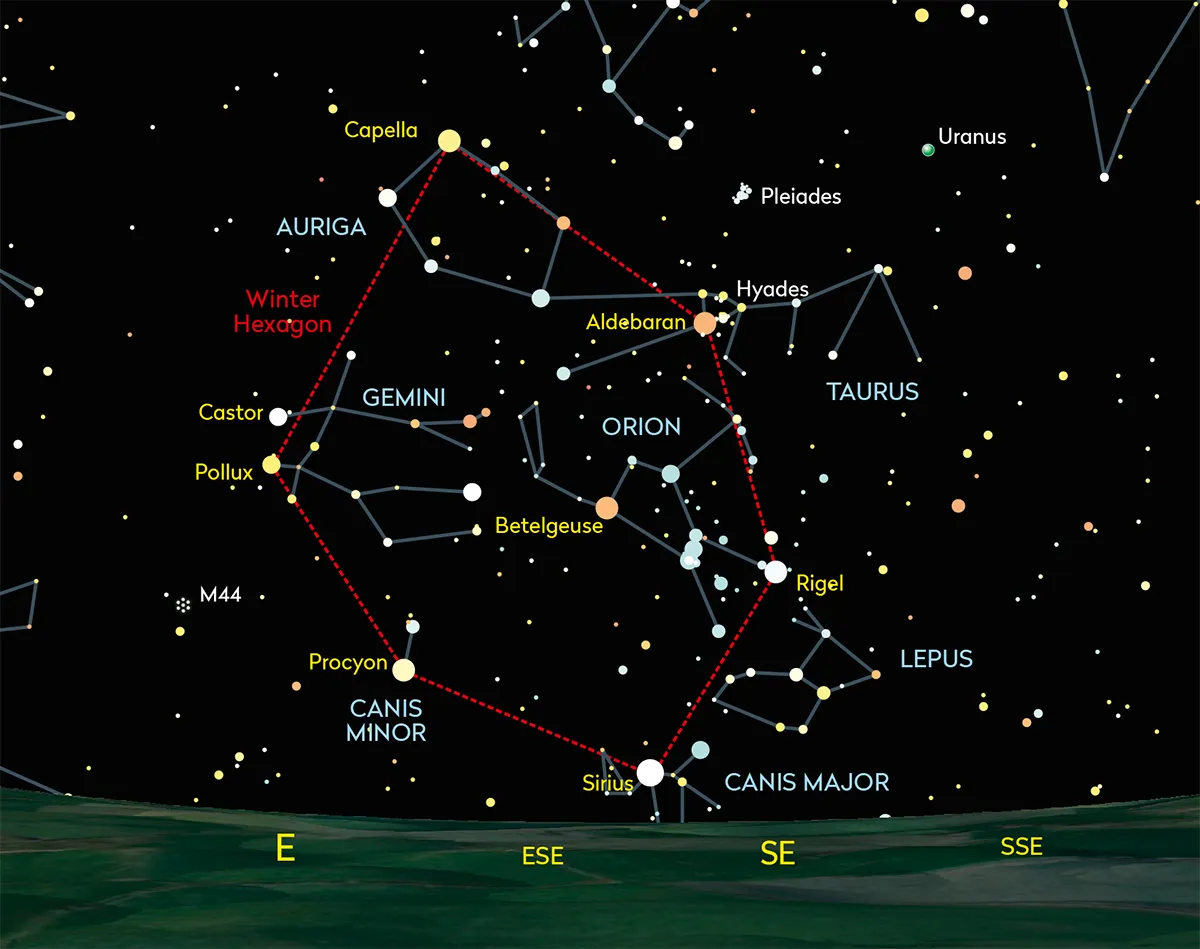Aldebaran (Alpha (α) Tauri) is one of the more prominent stars of the autumn and winter skies. It is an orange giant star, shining at mag. +0.9 with a slight variability of 0.2 magnitudes.
Aldebaran is particularly easy to locate – just extend the line of the three belt stars in the constellation Orion northwest.
It appears to be associated with the V-shaped Hyades open star cluster, lying at the end of the V’s southern arm, yet this is another instance where appearance is deceiving – the 153 lightyear-distant cluster is roughly twice as far as Aldebaran, which is 65.3 lightyears away.
Aldebaran is also part of the well-known asterism called the Winter Hexagon, and is one of the most striking winter stars to observe.

Aldebaran is 425 times more luminous than the Sun, and the most luminous star within 100 lightyears of Earth.
It is also one of the closest giants, with a diameter estimated to be 44 times that the Sun. If you replaced our Sun with Aldebaran, it would have an apparent diameter of around 22º.
Its close proximity and large physical diameter means Aldebaran presents a disc large enough to measure.
Even so, this is very small at just 0.021 arcseconds.

A gas giant planet several times the size of Jupiter may orbit the star: its existence was suggested in 1993, but remained doubtful until a 2015 study provided long-term evidence to back up the claim.
From Earth, a number of faint stars appear close to Aldebaran.
One of these, Alpha Tauri B, appears to have a similar distance and motion to Aldebaran.
However, being faint at mag. +13.6 and only separated from its bright host by half an arcminute, it is difficult to confirm or deny whether it is a true, physically bound companion.
This guide originally appeared in the December 2017 issue of BBC Sky at Night Magazine.

